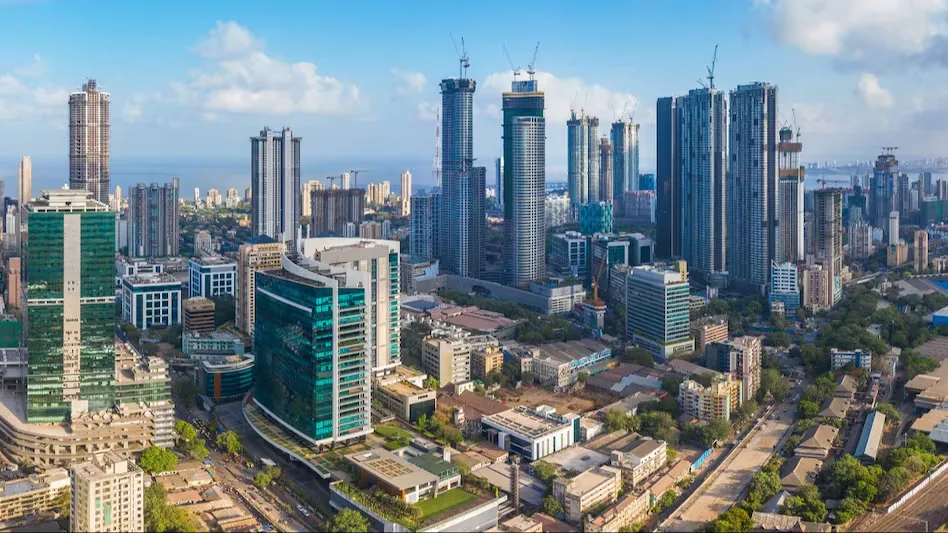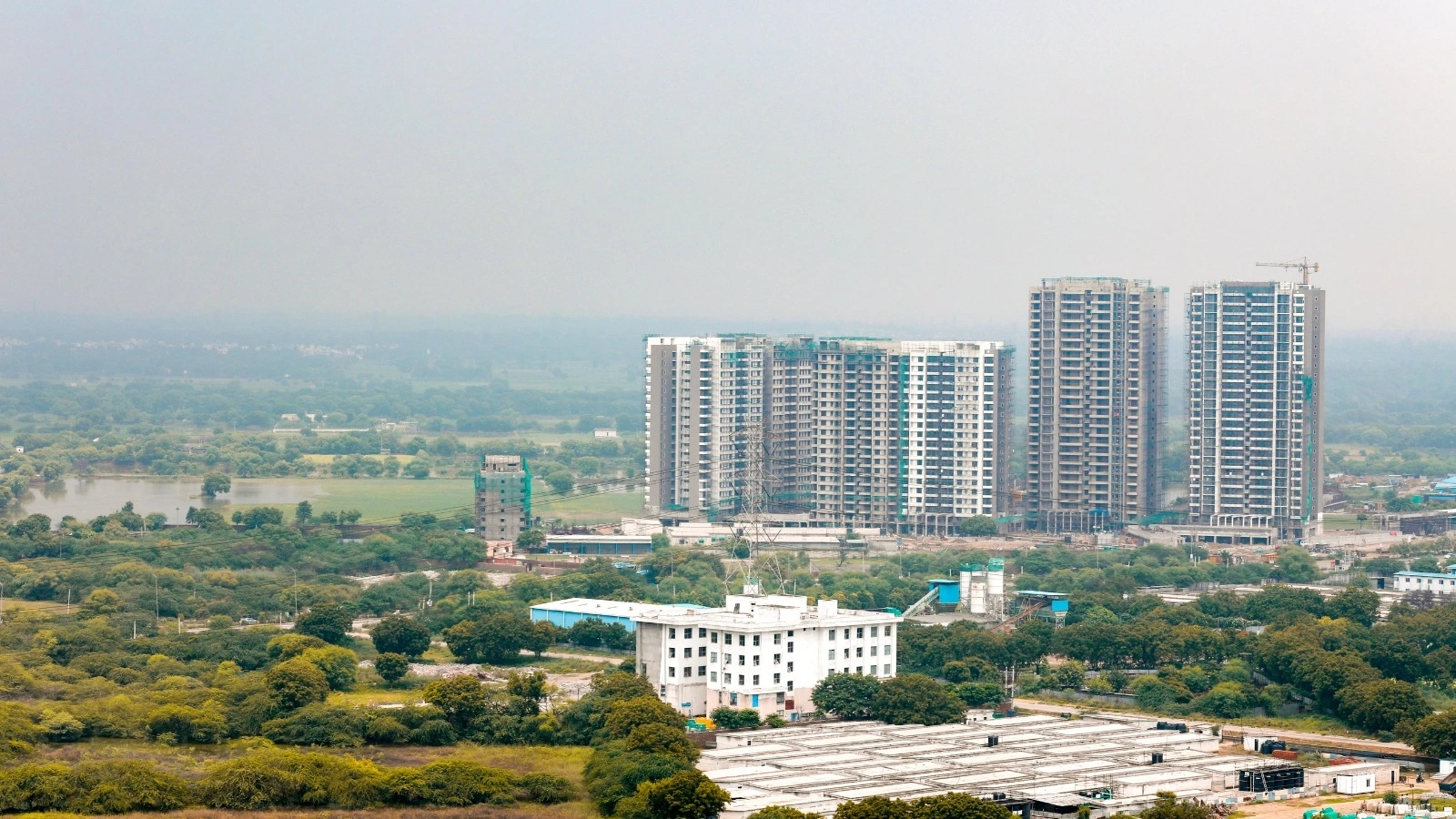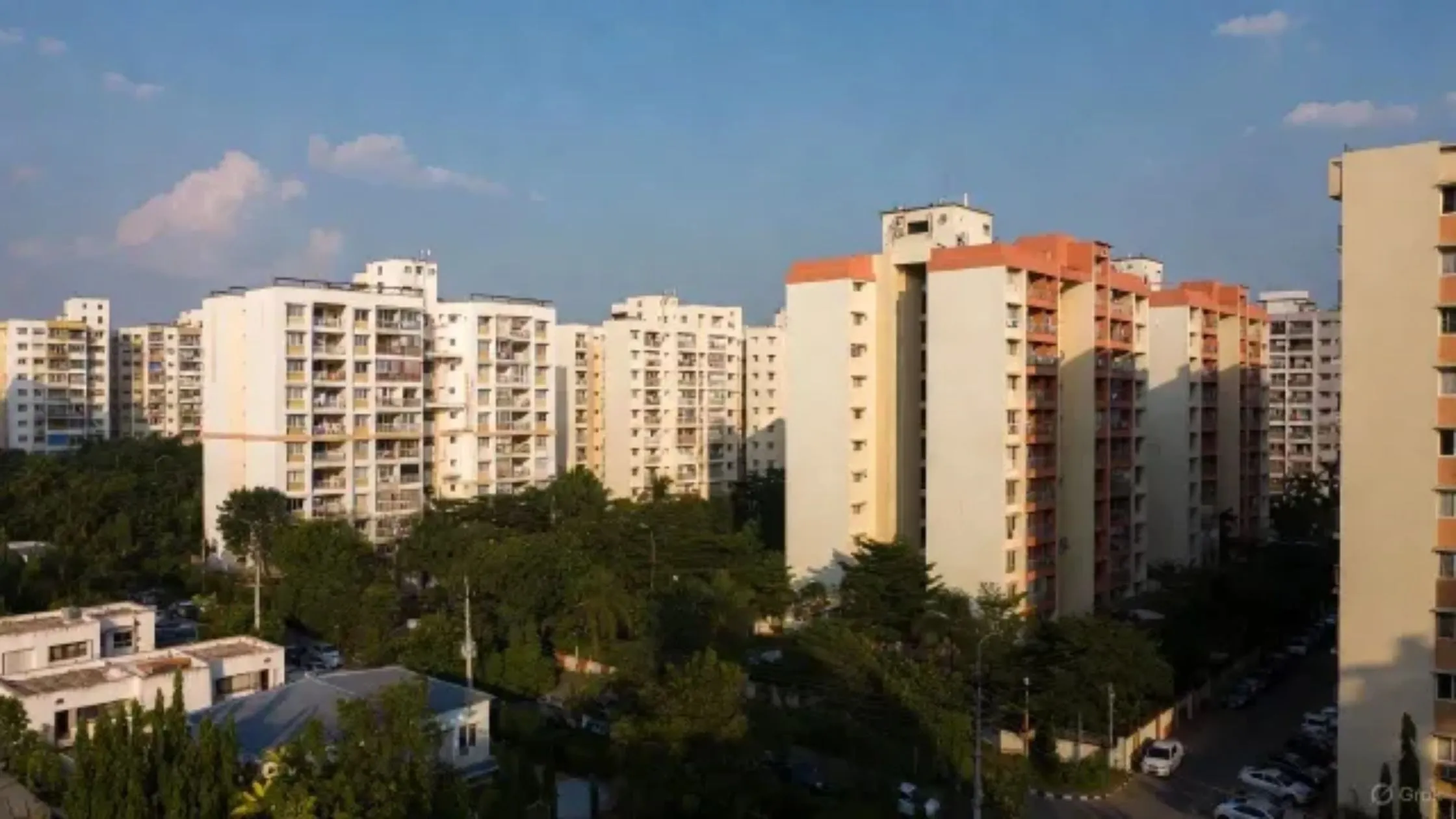Table of Content
- Nationwide Sales Trend: Market Cooling After a Robust Run
- City-Level Breakdown: Pune and Chennai Lead, NCR and Kolkata Lag
- Price Segments: Premium Housing Holds Ground
- New Launches: Developer Caution Amid Cost Pressures
- Home Prices Continue to Rise Despite Slower Sales
- Expert Commentary: Market Turning Value-Driven
- Conclusion
India’s residential property market, which has witnessed a remarkable upswing over the past two years, is now showing signs of moderation. According to the latest JLL report, housing sales in Jan–Sep 2025 dropped 12% year-on-year across the country’s top seven cities. The slowdown, driven by high property prices, seasonal factors, and economic uncertainty, signals a shift toward a more balanced phase after an extended period of growth.
Interestingly, Pune and Chennai stood out as exceptions, recording positive growth even as other metros saw weaker demand. The report indicates that these markets have maintained momentum due to stable pricing, active developer participation, and consistent end-user demand.
Nationwide Sales Trend: Market Cooling After a Robust Run
As per JLL’s analysis, housing sales in Jan–Sep 2025 fell to around 2.03 lakh units, compared to the same period last year. The third quarter alone saw sales dip 9% year-on-year and 2% sequentially, reflecting cautious buyer sentiment during the monsoon and pre-festive months.
The combination of rising interest rates, escalating property costs, and subdued economic confidence contributed to the slowdown. While developers continued to report healthy demand in the luxury segment, mid-income buyers delayed purchases amid affordability pressures.
Overall, the data points to a natural market cooling a transition from rapid post-pandemic expansion to value-driven stabilization, where both buyers and developers are recalibrating expectations.
Also Read: Delhi Govt May Create ‘A+’ Zone as It Reviews Circle Rates for Lutyens’ Area, Farmhouses
City-Level Breakdown: Pune and Chennai Lead, NCR and Kolkata Lag
A city-wise breakdown reveals that Pune and Chennai bucked the national trend with double-digit growth. Pune recorded a 14% year-on-year increase in residential sales, while Chennai followed closely with 13% growth. Both cities benefited from competitive pricing, abundant project launches, and sustained interest from end-users rather than investors.
In contrast, Delhi-NCR saw the steepest decline at 29%, followed by Kolkata at 21% and Mumbai at 16%. Bengaluru’s market remained stable but registered slower momentum compared to earlier quarters.
Despite the overall drop, Bengaluru, Mumbai, and Pune together accounted for more than 60% of total sales, highlighting the resilience of India’s major employment and economic hubs. Pune and Chennai’s growth underscores a key shift, buyers in emerging metros are driving the next wave of residential demand.
Price Segments: Premium Housing Holds Ground
While total units sold declined, the composition of demand changed notably. The JLL report highlighted that homes priced between ₹1.5 crore and ₹3 crore saw a 14% increase in sales, showing steady demand for premium offerings. Meanwhile, the sub-₹1 crore category witnessed a 23% year-on-year decline, reflecting affordability challenges among mid-income buyers.
This trend indicates that India’s housing market is becoming “value over volume” driven fewer homes are being sold, but at higher price points. Developers, recognizing this shift, are focusing more on premium and upper mid-segment projects, where margins remain attractive despite higher input costs.
New Launches: Developer Caution Amid Cost Pressures
Even as premium housing showed resilience, developers exercised caution in launching new projects. The report recorded 70,915 new units introduced during Q3 2025, bringing the nine-month total to 2.25 lakh units, down marginally by 1% from last year.
New supply remained stable as developers adapted to market realities — focusing on strategic locations, premium product lines, and steady inventory management. While launches slowed in the affordable category, Chennai, Pune, Kolkata, and Bengaluru witnessed healthy activity levels, indicating continued developer confidence in select high-demand pockets.
Home Prices Continue to Rise Despite Slower Sales
Despite the dip in sales, home prices maintained their upward momentum across all major cities. Average residential prices rose between 6% and 16% year-on-year, driven by elevated construction costs, limited land availability, and sustained demand for premium housing.
Kolkata led the list with 16% price growth, followed by Chennai at 14%, while both Delhi NCR and Bengaluru reported 13% increases. The combination of strong luxury demand and developers’ pricing power has helped offset the impact of slower transaction volumes.
For buyers, this means that even though fewer units are changing hands, overall affordability continues to tighten a clear indicator of structural demand outweighing short-term sentiment dips.
Also Read: Pune Real Estate Market Up 23% YoY in Sept 2025, Stamp Duty Collections Rise 3%
Expert Commentary: Market Turning Value-Driven
Commenting on the findings, Samantak Das, Chief Economist and Head of Research and REIS, India, JLL, noted that the housing market is entering a “value-driven” phase. While total volumes declined, premium housing demand and newly launched projects continue to perform well.
He highlighted that around 24% of sales during January–September 2025 came from projects launched in the same period a marginal increase from last year’s contribution. This suggests that buyers are responding positively to fresh inventory with improved amenities, efficient layouts, and upgraded sustainability features.
Conclusion
Looking ahead, experts believe that India’s residential market is moving into a balanced and sustainable phase. Rising prices are expected to continue due to limited inventory and strong luxury demand, while overall sales volumes may remain moderate as affordability concerns persist.
Developers are likely to focus on consolidating land banks, optimizing construction costs, and catering to end-user-driven demand in the coming quarters. The premium and upper mid-segments will continue to anchor market activity, supported by affluent buyers seeking long-term value and lifestyle upgrades.
As housing sales in Jan–Sep 2025 reflect this evolving equilibrium, the market appears to be normalizing after years of sharp growth. The shift signals not weakness, but a maturing real estate ecosystem aligned with economic fundamentals and end-user preferences.








Ans 1. Housing sales across the top seven cities declined by 12% year-on-year, reflecting a moderation after two years of rapid growth. Rising property prices, seasonal factors, and economic uncertainty contributed to this slowdown.
Ans 2. Pune and Chennai recorded positive growth, with Pune seeing a 14% YoY increase and Chennai 13%. These cities benefited from stable pricing, active developer participation, and sustained end-user demand.
Ans 3. Delhi-NCR saw the largest drop at 29%, followed by Kolkata at 21% and Mumbai at 16%. Bengaluru’s market remained stable but showed slower momentum compared to previous quarters.
Ans 4. Homes priced between ₹1.5 crore and ₹3 crore recorded a 14% increase in sales, indicating strong demand for premium housing. Conversely, properties below ₹1 crore saw a 23% decline, highlighting affordability challenges for mid-income buyers.
Ans 5. Rising construction costs, limited land availability, and sustained demand from affluent buyers have made premium and upper mid-segment homes more attractive. Developers are focusing on quality, amenities, and value rather than just volume.
Ans 6. A total of 2.25 lakh new units were launched during the nine-month period, with Q3 alone accounting for 70,915 units. This represents a marginal 1% decline from the same period last year, showing cautious developer activity.
Ans 7. Yes. Average residential prices increased between 6% and 16% YoY across major cities. Kolkata led with 16% growth, Chennai 14%, and both Delhi-NCR and Bengaluru 13%. Premium housing demand and developer pricing power helped sustain price growth.
Ans 8. A value-driven phase indicates that buyers are prioritizing quality, amenities, and long-term benefits over sheer volume. Even with fewer transactions, demand for well-located and premium properties remains strong.
Ans 9. Developers are focusing on consolidating land banks, optimizing construction costs, and launching end-user-focused projects in strategic locations. Emphasis is on premium and upper mid-segment housing where margins remain attractive.
Ans 10. Experts expect moderate sales volumes to continue, with home prices rising due to limited inventory and strong luxury demand. The market is stabilizing into a balanced phase, favoring long-term value and sustainable growth rather than speculative buying.